
Archaeologists discovered a Neolithic henge while searching for a nobleman’s grave in England
When archaeologists from Newcastle University were working to find the tomb of Saint Guthlac, who died in Crowland, Lincolnshire in 714 and became famous for his life of solitude, renouncing a life of wealth as the son of a nobleman, they surprisingly found a much more complex and ancient history than they expected. Guthlac was
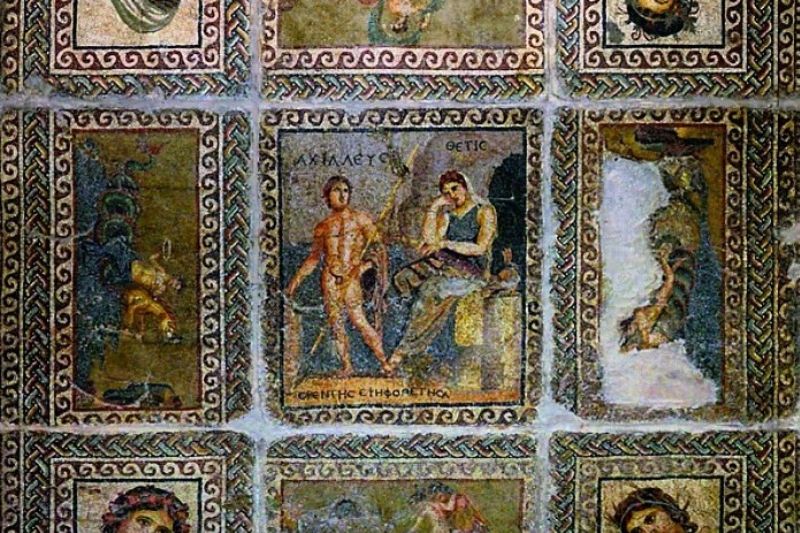
Amisos Mosaic depicting Achilles and Thetis in the Ancient City of Amisos
The Amisos Mosaic was discovered in 1958 during excavation works in the ancient city of Amisos. The central panel in the center of the Amisos Mosaic, which has a base size of 56 m2, depicts Achilles and Thetis, and there are inscriptions on the heads of the figures indicating their identity. This panel depicts the
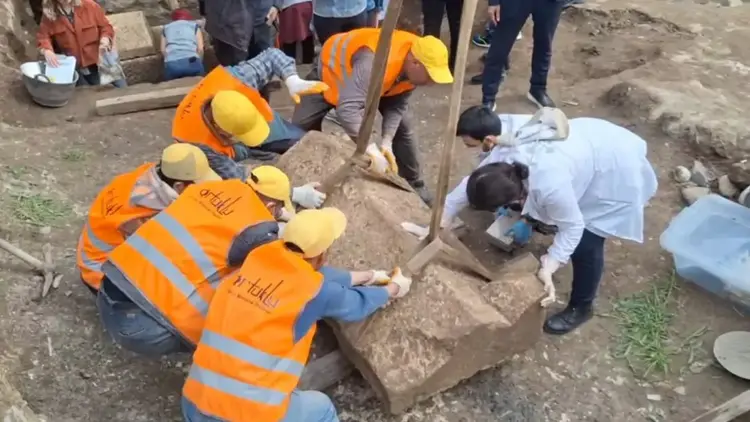
Roman sarcophagus found for the first time in Diyarbakır
A sarcophagus thought to be from the Roman period was found during the restoration works of the damaged points of the 5,000-year-old Diyarbakır city walls, a UNESCO World Cultural Heritage Site. The sarcophagus found in Diyarbakır attracted attention because it was found for the first time. While the restoration work on the 4th stage of

Tide reveals a Bronze Age fort on the Irish island of Clew Bay
A sunken Bronze Age fort has been discovered on the island of Clew Bay off the coast of North Mayo, Ireland. The discovery was made at low tide in Clew Bay. Archaeologist Michael Gibbons said initial research suggested that the island – Collanmore – was a fort dating from the Late Bronze Age. The castle

The unique “twin baby stele” that survived from the Ancient Greek
The National Archaeological Museum of Athens announced that the unique “twin baby stele” from Ancient Greece has gone on display. The stele of the unique twin babies will be on display for only a few weeks as part of the exhibition project “Unseen Museum“. The fragment, known as the “stele of twin babies”, depicting two
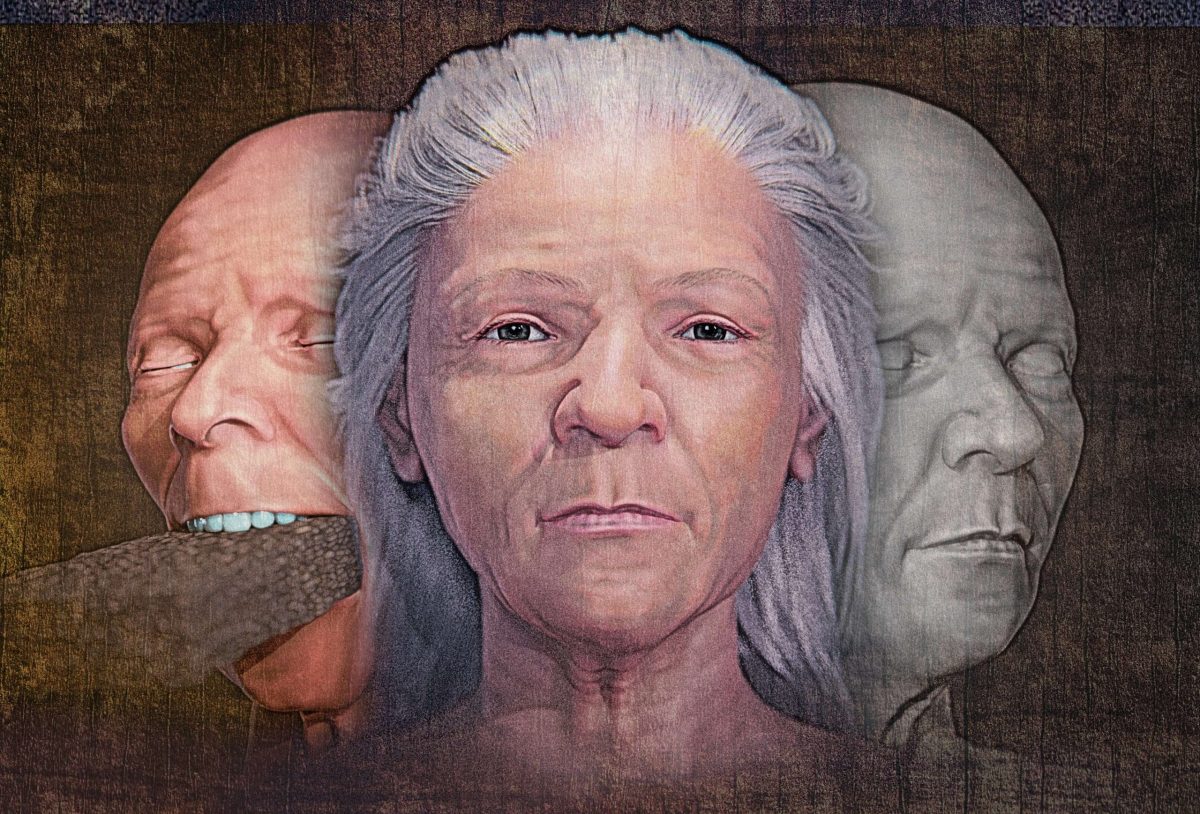
A 16th century Italian ‘vampire’ found buried with a brick in its mouth has had its face reconstructed
The face of a “vampire” whose grave was dug up in Venice in the 16th century and found with a brick in his mouth has been reconstructed. Archaeologists made an interesting discovery while excavating mass graves on the island of Lazzaretto Nuovo in Venice in 2006. In one of the graves, a female skeleton was
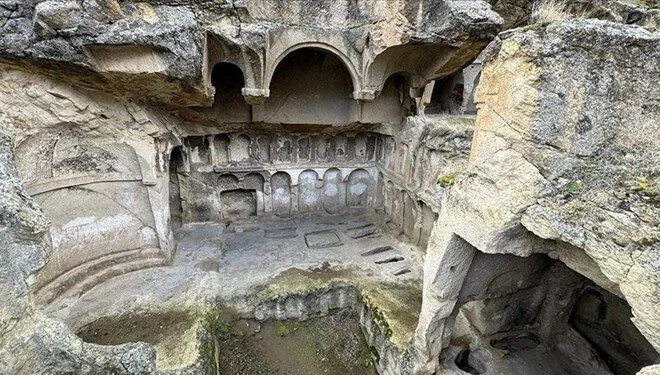
1000-year-old churches carved into rock in Erdemli Valley opened to visitors
Erdemli Valley with 1000-year-old rock churches and structures in Yeşilhisar district of Kayseri was opened to visitors. The canyon in the Erdemli Valley was formed as a result of the flow of lava and erosion by rivers when Mount Erciyes was an active volcano. The valley is about 70 kilometers from Kayseri city center. The

The magnificent throne room of the Knossos Palace is believed to be the oldest throne room in Europe
The Minoan civilization, a flourishing Bronze Age culture, thrived on the island of Crete between 2700 BC and 1450 BC. Among the remarkable remnants of this civilization is the Knossos Palace, a sprawling complex that once served as the center of Minoan power. Within the palace lies the throne room, a captivating chamber that is
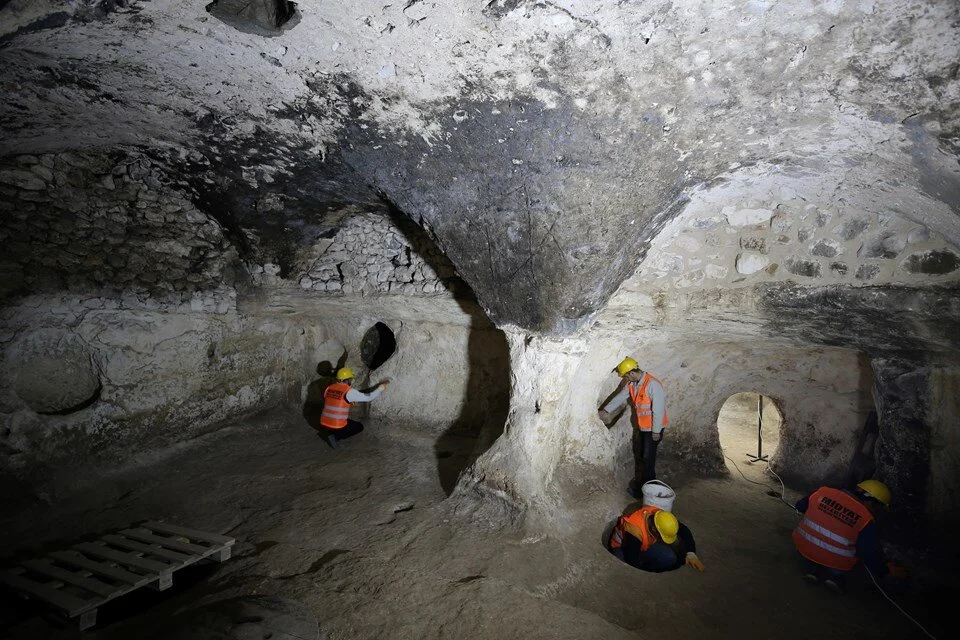
The 5,000-year-old underground city of Matiate will be open to visitors
Efforts are underway to open the 5,000-year-old underground city of Matiate, located in the Midyat district of the Mardin province in southeastern Turkey, to visitors. Excavations began in 2000 in the underground city of Matiate, which includes a place of worship, silos, water wells, shelter, wine house, workshops, cisterns and burial grounds, as well as

Tutankhamun’s DNA results: Give surprising findings of incest evidence
Recent DNA tests on the remains of King Tutankhamun have revealed some startling and unexpected results. He tests, which were conducted by a team of international scientists, have led to the conclusion that Tutankhamun’s parents were likely siblings. This incestuous relationship was not uncommon among ancient Egyptian royalty. Tutankhamun is known as the child king
